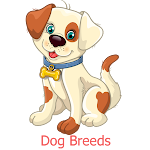 |
| Dachshund |
The Dachshund is a unique and fascinating breed that has captured the hearts of dog lovers all over the world. Known for their distinctive elongated body and short legs, Dachshunds have a rich history and a set of characteristics that make them a popular choice for many families. In this article, we will explore the history of the Dachshund breed, as well as its unique characteristics that make it stand out among other dog breeds.
History of the Dachshund
The Dachshund, also known as the "wiener dog" or "sausage dog," has a long and rich history that dates back to the 15th century in Germany. The breed was originally developed to hunt badgers, rabbits, and other burrow-dwelling animals due to its long and narrow body, which allowed it to enter and maneuver through tight spaces. The word "dachshund" itself is German and translates to "badger dog."
In the 1800s, Dachshunds were refined and bred to create the standardized breed that we know today. They were recognized by the American Kennel Club (AKC) in 1885 and have since become one of the most popular breeds in the United States.
Characteristics of the Dachshund
Physical Characteristics
Dachshunds are well-known for their distinct physical characteristics, which include a long and low body, short legs, and a deep chest. They come in three coat varieties: smooth, long-haired, and wire-haired. Their coat colors can range from black and tan, to red, cream, chocolate, and dapple.
YOU MAY LIKE:
The 10 Best Large Dog Breeds for FamiliesThe 10 Complete Dog Breeds Guide for Beginners
The 10 Dog Breeds with the Best Eyesight
The 10 Dog Breeds with the Best Sense of Smell
The 10 Dog Breeds with the Best Sense of Smell
The 10 Dog Breeds with the Best Temperaments
The 10 Dog Breeds with the Best Temperaments
Temperament
Dachshunds are known for their lively and affectionate nature. They are bold and curious dogs, often displaying a sense of independence and playfulness. They are also known to be loyal and protective of their families, making them excellent watchdogs. However, they can also be stubborn at times, requiring consistent training and socialization from a young age.
Health Concerns
Like all breeds, Dachshunds are prone to certain health issues, including intervertebral disc disease (IVDD) due to their elongated spines. Obesity is also a common concern for Dachshunds, as their unique body shape puts them at risk for back problems. Regular exercise and a balanced diet are crucial in maintaining their overall health and well-being.
Conclusion
The Dachshund breed has a captivating history and a set of characteristics that make it a beloved companion for many families. From its origins as a skilled hunter to its role as a loving and loyal family pet, the Dachshund continues to charm dog enthusiasts around the world. With proper care, training, and attention to their unique health needs, Dachshunds can thrive and bring joy to their owners for many years to come.
Frequently Asked Questions (FAQs)
Q: Are Dachshunds good with children?
A: Dachshunds can be good with children, but it's important to supervise interactions and teach children how to properly handle and respect the dog. Early socialization and training are key in helping Dachshunds become well-rounded family pets.
Q: How much exercise do Dachshunds need?
A: Dachshunds are active dogs and require regular exercise to keep them healthy and mentally stimulated. Daily walks, playtime, and interactive toys can help meet their exercise needs.
Q: Do Dachshunds shed a lot?
A: Dachshunds do shed, but the amount can vary depending on their coat type. Smooth-coated Dachshunds may shed less than their long-haired or wire-haired counterparts. Regular grooming and brushing can help minimize shedding.
Q: Are Dachshunds easy to train?
A: Dachshunds can be independent and stubborn, which can make training a challenge. Consistency, positive reinforcement, and patience are essential in successfully training a Dachshund.


